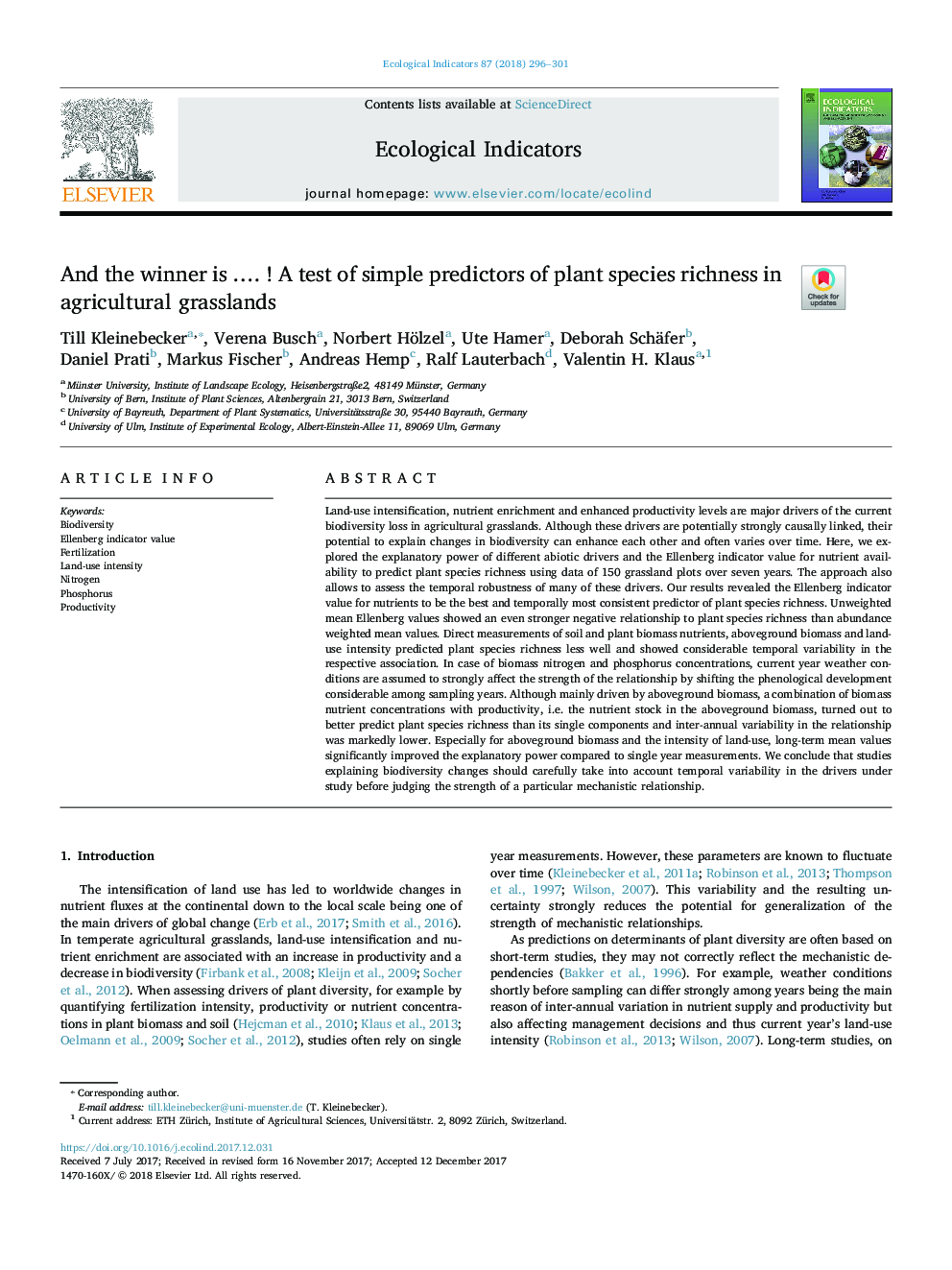| کد مقاله | کد نشریه | سال انتشار | مقاله انگلیسی | نسخه تمام متن |
|---|---|---|---|---|
| 8845598 | 1617115 | 2018 | 6 صفحه PDF | دانلود رایگان |
عنوان انگلیسی مقاله ISI
And the winner is â¦. ! A test of simple predictors of plant species richness in agricultural grasslands
دانلود مقاله + سفارش ترجمه
دانلود مقاله ISI انگلیسی
رایگان برای ایرانیان
کلمات کلیدی
موضوعات مرتبط
علوم زیستی و بیوفناوری
علوم کشاورزی و بیولوژیک
بوم شناسی، تکامل، رفتار و سامانه شناسی
پیش نمایش صفحه اول مقاله

چکیده انگلیسی
Land-use intensification, nutrient enrichment and enhanced productivity levels are major drivers of the current biodiversity loss in agricultural grasslands. Although these drivers are potentially strongly causally linked, their potential to explain changes in biodiversity can enhance each other and often varies over time. Here, we explored the explanatory power of different abiotic drivers and the Ellenberg indicator value for nutrient availability to predict plant species richness using data of 150 grassland plots over seven years. The approach also allows to assess the temporal robustness of many of these drivers. Our results revealed the Ellenberg indicator value for nutrients to be the best and temporally most consistent predictor of plant species richness. Unweighted mean Ellenberg values showed an even stronger negative relationship to plant species richness than abundance weighted mean values. Direct measurements of soil and plant biomass nutrients, aboveground biomass and land-use intensity predicted plant species richness less well and showed considerable temporal variability in the respective association. In case of biomass nitrogen and phosphorus concentrations, current year weather conditions are assumed to strongly affect the strength of the relationship by shifting the phenological development considerable among sampling years. Although mainly driven by aboveground biomass, a combination of biomass nutrient concentrations with productivity, i.e. the nutrient stock in the aboveground biomass, turned out to better predict plant species richness than its single components and inter-annual variability in the relationship was markedly lower. Especially for aboveground biomass and the intensity of land-use, long-term mean values significantly improved the explanatory power compared to single year measurements. We conclude that studies explaining biodiversity changes should carefully take into account temporal variability in the drivers under study before judging the strength of a particular mechanistic relationship.
ناشر
Database: Elsevier - ScienceDirect (ساینس دایرکت)
Journal: Ecological Indicators - Volume 87, April 2018, Pages 296-301
Journal: Ecological Indicators - Volume 87, April 2018, Pages 296-301
نویسندگان
Till Kleinebecker, Verena Busch, Norbert Hölzel, Ute Hamer, Deborah Schäfer, Daniel Prati, Markus Fischer, Andreas Hemp, Ralf Lauterbach, Valentin H. Klaus,